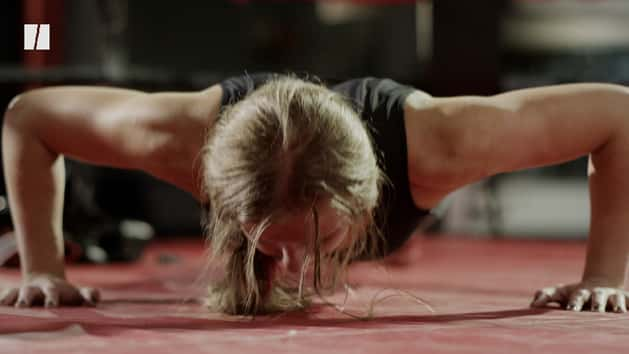As we barrel through autumn and winter, the idea of walking outdoors may seem like a far-off, warm-weather memory. Earlier sunsets and colder days make walking outside tough for many people.
But if you’re someone who counts on their walk for fitness or a mental health boost, there are still ways to get in some steps while staying warm and safe at home (or within other spaces).
Here, experts share how to get in a meaningful walk (or other low-intensity exercise) in the chilly months:
Head to a hallway or similar space in your home
According to Dr Aaron Baggish, a professor of medicine at the University of Lausanne in Switzerland, the most straightforward way to get in a walk at home is to simply do that – go for a walk indoors. But keep in mind that the degree to which an indoor walk can be done depends on what your home looks like, he said.
“What I typically tell people is to find either a loop within the house that goes through consecutive rooms or the longest straight distance, which is usually a hallway,” Baggish says.
From there, pick a time goal or a step goal and start moving. If you get bored (and circling around an indoor loop can be boring), you can turn on some music, flip on the TV or call a friend as you walk, he says.
“You can get a good 20-to-30-minute walk just in your house without going anywhere,” Baggish says.
Hit the stairs
If you live in a home with multiple levels, you can walk up and down the stairs as a way to get moving. “Stair-walking is a great exercise,” says Catherine Hagan Vargo, a physical therapist at the University of Pittsburgh Medical Center.
As far as how many times you need to climb them, that’s up to you, she adds.
“If you get fatigued walking up and down one flight upstairs, that’s enough for now,” Vargo says. But if you find that one time isn’t hard enough for you, bump it up to two or three.
Vargo noted that while you don’t want to push yourself too much, you do want to make this exercise challenging – and you should build on it, too. If you eventually are able to walk up and down the stairs twice with no issue, increase your reps from there.
Do some outdoor chores
Raking leaves or shovellingsnow aren’t exactly activities that many people look forward to as colder weather arrives, but they are good ways to get moving, says Gerard Burley, a wellness strategist and the founder of fitness studio Sweat DC.
“They utilise your core, your arms, your legs,” he says, adding that these “are great two-for-one activities – you get to clean up and get your body moving.”
The US National Institute on Ageing even categorises tasks like yardwork or gardening as endurance-building physical activities. But it’s also important to remember that shovelling snow has been linked with heart attacks, since it can put significant strain on the body, according to Cleveland Clinic.
If you are used to physical activity, you’re probably fine. But if not, it’s best to break up your shoveling throughout the day. That way, you can still get the benefits without the risk. If you’re ever unsure, chat with your doctor.

Go to an indoor shopping mall or supermarket
If you are one of the many people who do not have enough room for a walk inside their homes, try another indoor space instead.
“There’s an amazing resource that many people have at their disposal that they overlook, and that is the use of shopping malls or shopping centres,” Baggish says.
Malls have a huge amount of indoor space that you can use to get in your steps during the winter, and many open their doors before the stores do. Baggish says that you can head to the mall early for your walk so that it’s less busy and you aren’t tempted to shop. He even recommended leaving your wallet at home.
“You can get as long a walk as you want, cover a lot of distance [and] even go up and down stairs,” he says.
Baggish adds that the same can be done at a large grocery store. You can visit the store during its off hours and walk some laps through the aisles.
″[This] is great for people with balance or mobility issues,” Baggish says. “Grab yourself a shopping cart and push that around for 20 minutes, and get in a great workout in a safe environment.”
Have a dance party
“A dance party in the house is a fantastic way to get some steps, some movement [and] some cardio,” Vargo says.
You can put on your favourite song or artist and dance along as you wait for a pot of water to boil or as you heat up your lunch. This is “a great destressor,” she says. “It’s great for mental health, and it’s great for physical health.”
In fact, research shows that moderate-intensity dance has been linked with a lower risk of death from cardiovascular disease. Plus, dancing is just a way to get moving if you’re not someone who typically looks forward to a traditional workout.
If you work in an office setting, use what’s in front of you to move more
Those who work in an office can add to their daily step count by using a printer or a water bottle refill station that is somewhat far away, Vargo says.
While it may not seem like an extra minute on your feet amounts to much, these small changes can actually add up to a real difference at the end of the week or month.
Burley, of Sweat DC, suggested leaning on co-workers to help you stay accountable during the workday. That can mean setting up a group text for everyone to check in on their movement goals or picking a specific time for a group walk on the office stairs.
Set reminders for yourself to get moving
“The key now is to be intentional about [movement],” Burley says.
You can try setting a timer or using the natural transitions within your day – like the end of a meeting or when you have gone through all your unread emails – to remind yourself to get up. During those breaks from sitting, you can move around for a bit however you like, whether that’s doing jumping jacks, going for a short walk or doing some squats.
Not only is moving around good for your physical health, but “it’s also proven that the energy helps you [be] a little bit sharper mentally,” Burley says.
And remember that you can still walk outside in the colder months
Baggish notes that while walking outdoors in the fall and winter may be more challenging because of earlier sunsets and colder weather, it is certainly still a reasonable thing to do.
“It’s not harmful for the body to walk in cold air, assuming [you’re] wearing an appropriate jacket,” he said.
The only cause for concern comes from slippery surfaces as a result of snow or ice. To help prepare for this, make sure you’re wearing shoes with some form of tread that can give you a proper grip, Baggish says. (It’s also important to keep safety in mind, so try to walk during daylight hours when possible.)
“If [you] have any tendency of being imbalanced or at a fall risk, strongly consider using something to support [yourself] whether it’s walking sticks or a cane,” he adds.
Plus, using walking poles or ski poles incorporates your upper body muscles. This is sometimes known as Nordic walking, which comes with a host of other benefits.
Getting in your weekly movement should be done year-round, but it may just take a little more creativity during the colder months, Baggish says.

